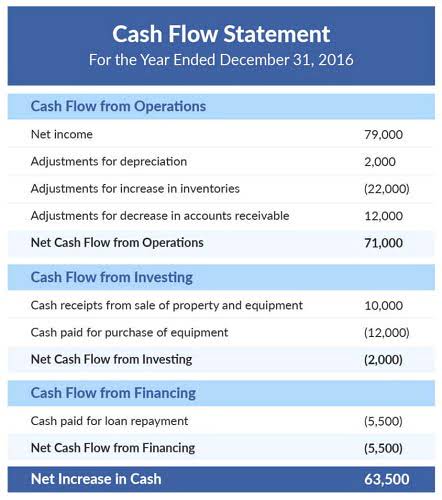PRESENT VALUE ANNUITY FACTORS PVAF TABLE

A common example of an annuity is a retirement plan where the investor purchased the annuity and at a point in the future, the retirement fund pays the investor a set amount each month. There are ordinary annuities pv annuity table where payments occur at the end of the period and present value of an annuity due or PVAD where the payments occur at the beginning of the period. PV annuity tables are one of many time value of money tables, discover another at the links below. They provide the value now of 1 received at the end of each period for n periods at a discount rate of i%. Whether it’s free cash flow, dividend forecasts, or discount rates, the inputs are already there. It helps you find the total value of those future payments in today’s dollars.
- You might want to calculate the present value of the annuity, to see how much it is worth today.
- This can be particularly important when making financial decisions, such as whether to take a lump sum payment from a pension plan or to receive a series of payments from an annuity.
- It helps you find the total value of those future payments in today’s dollars.
- However, external economic factors, such as inflation, can adversely affect the future value of the asset by eroding its value.
- Find out how an annuity can offer you guaranteed monthly income throughout your retirement.
Lease Accounting (IFRS & GAAP)
The present value (PV) of an annuity is the current value of future payments from an annuity, given a specified rate of return or discount rate. It is calculated using a formula that takes into account the time value of money and the discount rate, which is an assumed rate of return or interest rate over the same duration as the payments. The present value of an annuity can be used to determine whether it is more beneficial to receive a lump-sum payment or an annuity spread out over a number of years. The time value of money is a concept where waiting to receive a dollar in the future is worth less than a dollar today, since a dollar today could be invested and be worth more in the future.
- An annuity table is a simple tool that provides an easy way to determine the current present value of your annuity.
- It’s important to realize that the PVAD tables assume that payments are made at the beginning of each period.
- These are often baked into the other tables but can be handy on their own for quick math.
- PVAD tables are a financial tool used to determine the PV of a series of equal payments, where each payment is made at the beginning of each period, rather than at the end.
- Future value (FV) is the value of a current asset at a future date based on an assumed rate of growth.
- The discount rate is a key factor in calculating the present value of an annuity.
Preparing for Financial Health in Your Golden Years: Navigating Cognitive Decline

This variance in when the payments are made results in different present and future value calculations. It’s important to note that the discount rate used in the present value calculation is not the same as the interest rate that may be applied to the payments in the annuity. The discount rate reflects the time value of money, while the interest rate applied to the annuity payments reflects the cost of borrowing or the return earned on the investment. For example, if an individual could earn a 5% return by investing in a high-quality corporate bond, they might use a 5% discount rate when calculating the present value of an annuity. The smallest discount rate used in these calculations is the risk-free rate of return.

What are the different types of certificates of deposit (CDs)?
Annuity.org partners with outside experts to ensure we are providing accurate financial content. The PV tables are available for download in PDF format by following the link below. She holds a Bachelor of Science in Finance degree from Bridgewater State University and helps adjusting entries develop content strategies.
- Accordingly, use the annuity formula in an electronic spreadsheet to more precisely calculate the correct amount of the present value of an annuity due.
- An annuity due arises when each payment is due at the beginning of a period; it is an ordinary annuity when the payment is due at the end of a period.
- An annuity due involves payments made at the beginning of each period.
- The PV tables are available for download in PDF format by following the link below.
- A common example of an annuity is a retirement plan where the investor purchased the annuity and at a point in the future, the retirement fund pays the investor a set amount each month.
- If you’re trying to make smart and future-facing money decisions, chances are this table belongs on your desk (or spreadsheet).
Present Value of a Growing Annuity (g ≠ i)

First, identify whether your annuity is ordinary (payments at https://www.bookstime.com/ the end of each period) or due (payments at the beginning). While Wisesheets doesn’t calculate present value directly, it gives you every input you need. To make the table flexible, reference the interest rate and number of periods from your table instead of hardcoding them. And if free cash flow is your main input, here’s a deeper dive into why free cash flow yield matters in your valuation work. In decision frameworks where speed and clarity matter – like project evaluation, lease analysis, or quick valuations – present value tables serve as a mental shortcut.
- The intersection of the number of payments and the discount rate presents a factor that is multiplied by the value of payments, providing the present value of the annuity.
- Any product that pays out at the end of a period is considered an ordinary annuity.
- Annuities as ongoing payments can be defined as ordinary annuities or annuities due.
- He has been the CFO or controller of both small and medium sized companies and has run small businesses of his own.
- These tables are used in financial calculations such as loan amortization, lease payments, and other types of annuities.
- Annuities turn your savings into future payments, increasing in value over time based on the type of annuity and its interest rate.
- There are financial tools and annuity calculators that find the present value of an annuity, but to better understand those calculations, here are some practical examples.

